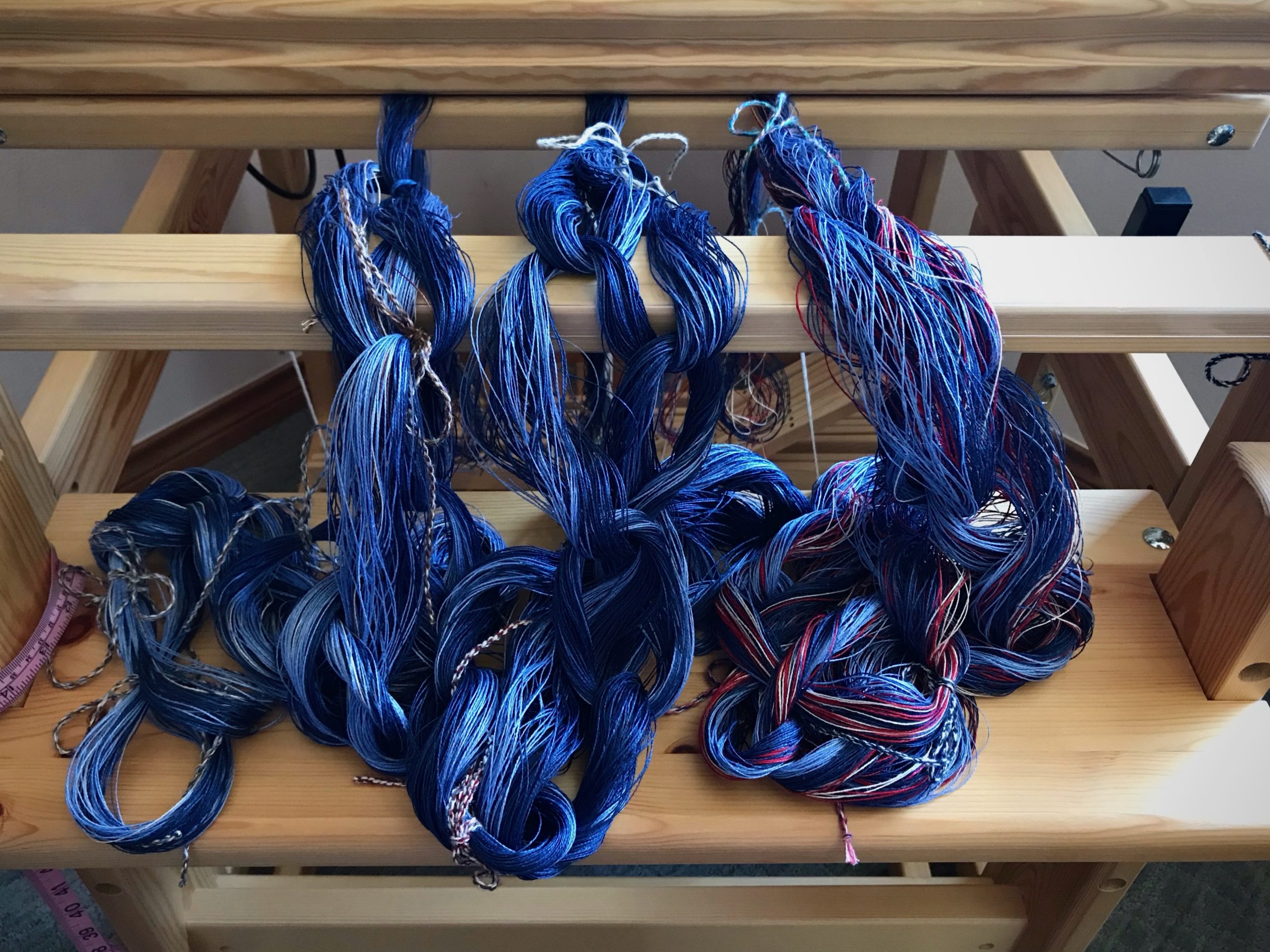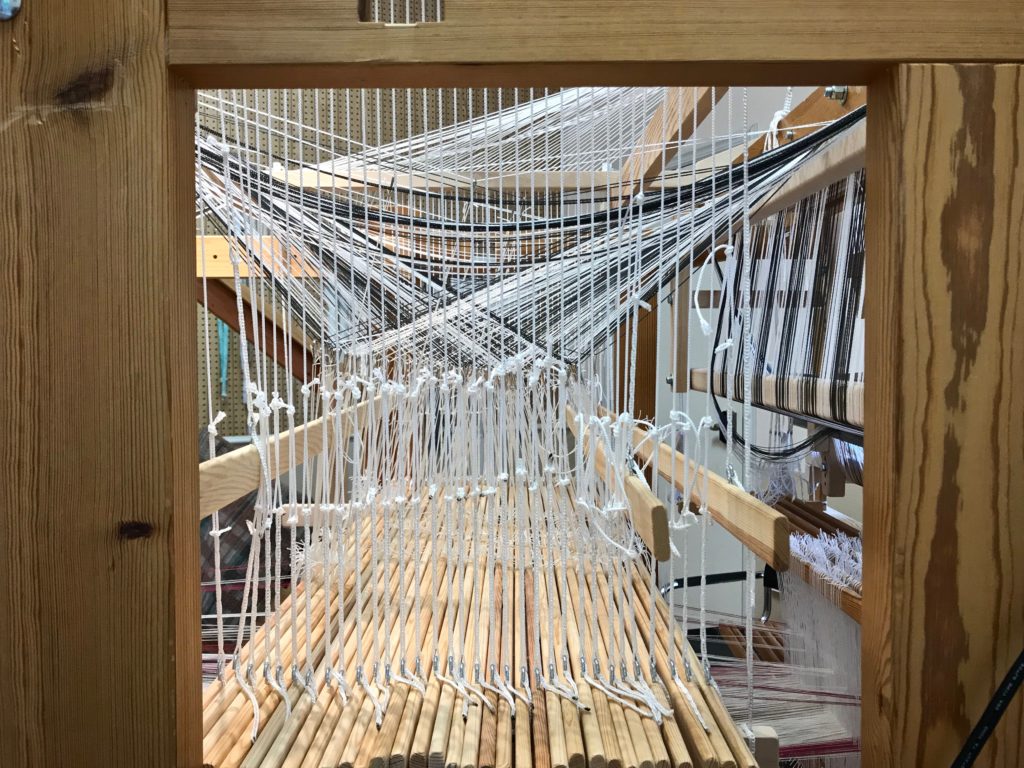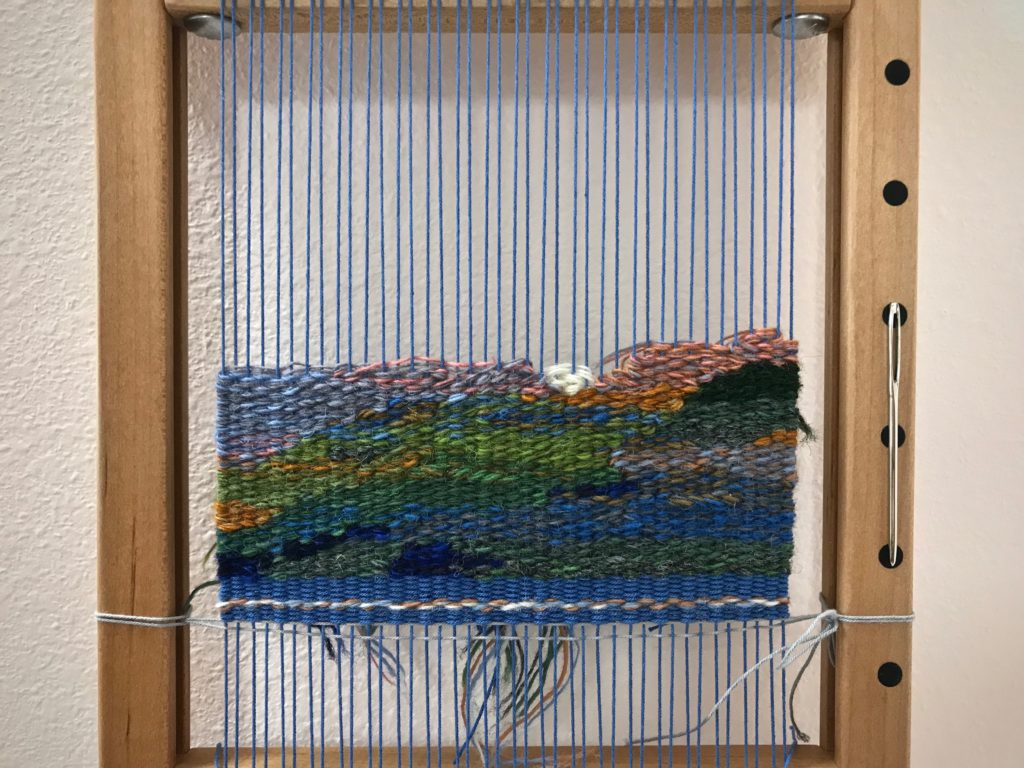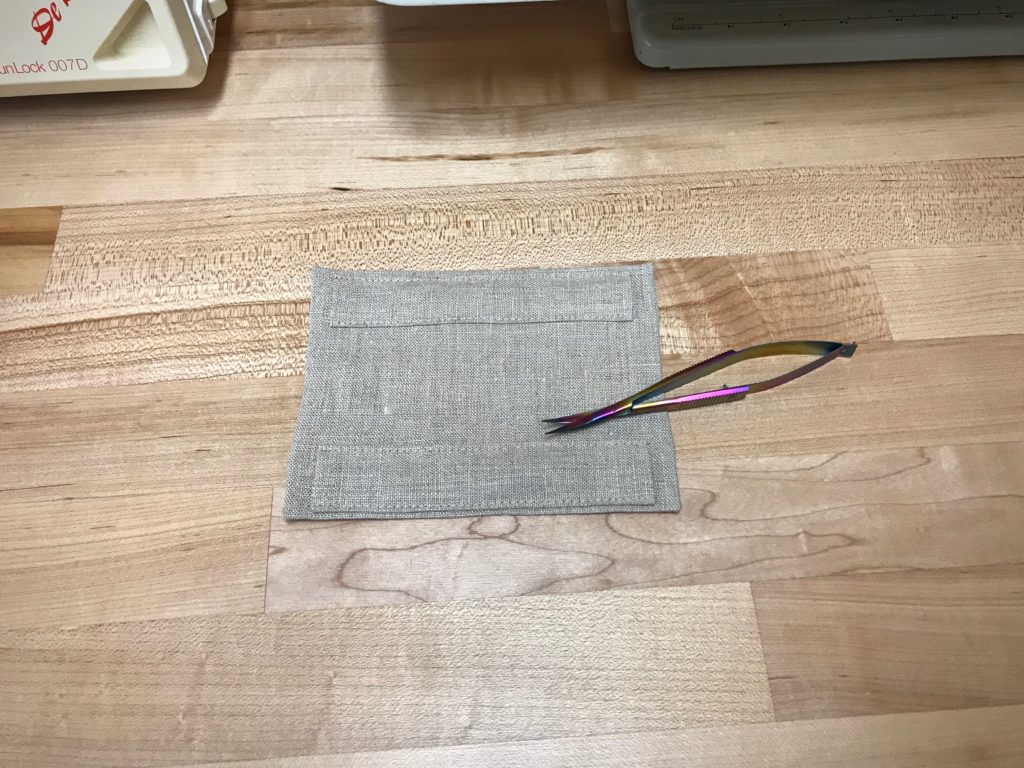I like having a project on one of my looms that is within reach of any friend who drops by. This new warp on the Julia fits the bill. Since I am using up several nearly empty tubes of linen, I am giving this warp an irregular color sequence. That should be interesting in this very structured 8-shaft broken twill.



I am making dish cloths here. Linen dish cloths. Why not wash dishes with something interesting? I am eager to see what develops as I add weft colors. Anyone else who sits at this loom can choose their own mix of colors. I hope we get some wild combinations that bring a smile to the one whose hands are washing dishes.

God’s wisdom is a far reach for our human understanding. The complexity of his creation shows us how much we still don’t understand. How could we ever reach that far? Our best efforts are like irregularities in a well-structured cosmos. Good news! God put himself within our reach. He did it at his own expense—the cross of Christ. When we trust in Christ our wild threads are expertly woven into cloth that he can use. Some of our wild combinations probably make him smile.
May you grow in wisdom.
With wild threads,
Karen































